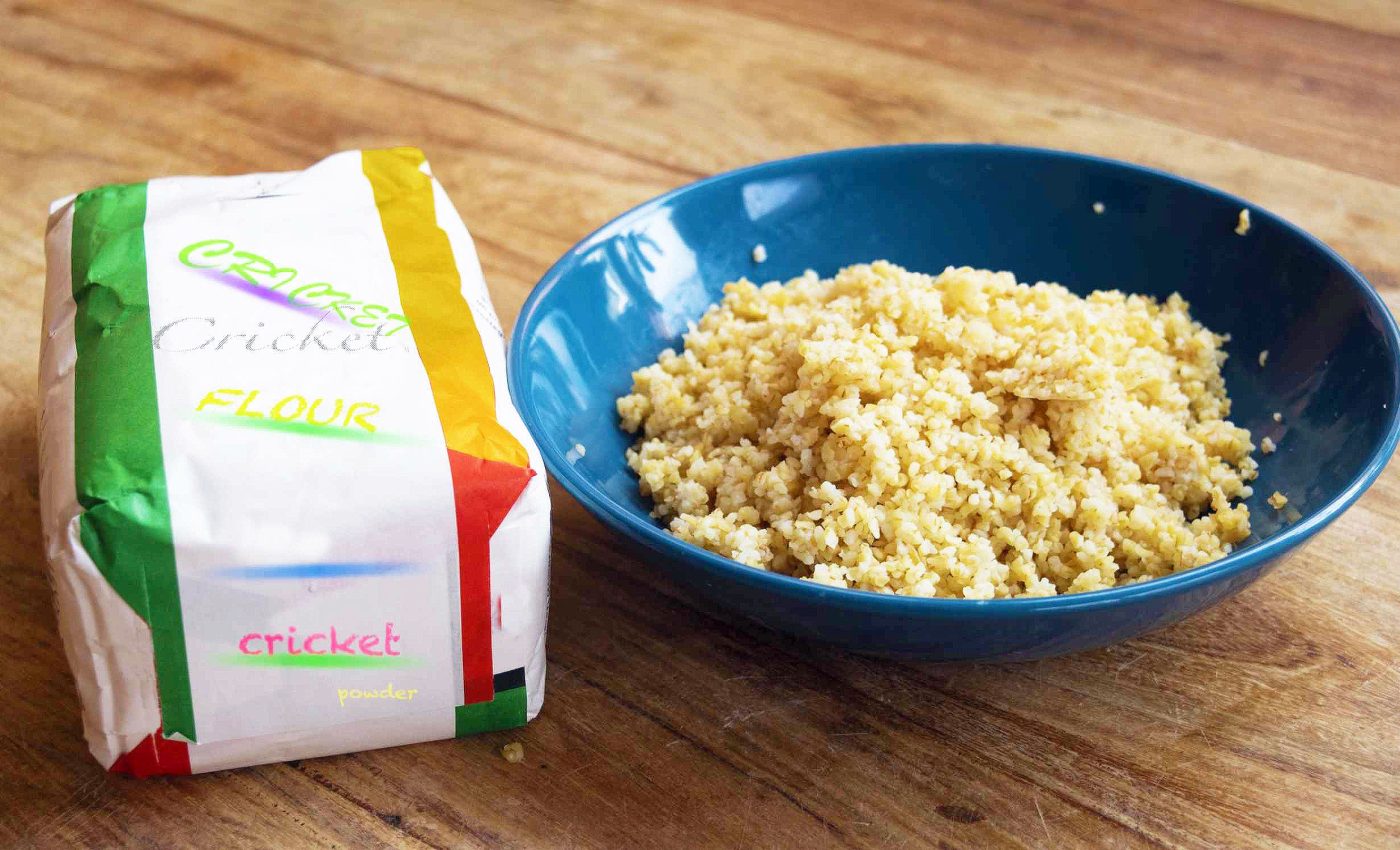
New type of flour contains more protein than meat and eggs
Over the past decade, chefs and nutrition scientists have been hunting for protein sources that tread lightly on the planet. One small candidate, the cricket, is now being milled into a versatile flour with enough nutrients to rival steak.
At labs in Argentina and kitchens in Europe, cricket flour is easing into pasta dough, cereal bars, and sandwich bread without demanding much change in taste or texture.
The broad appeal comes from its rich nutritional profile and its remarkably low environmental cost.
Flour as a protein source
Dr. Carlos Gabriel Arp of the National University of La Plata (UNLP) and the Argentine National Scientific and Technical Research Council (CONICET) says the logic is straightforward.
Crickets turn leftovers into lean tissue faster than cows ever could, and his team’s work on entomophagy forms part of a wider push to rethink protein supply chains.
That ratio is roughly six times better than beef cattle, freeing up water, land, and fertilizer in one motion.
“The insects in this study had a higher relative growth rate and emitted comparable or lower amounts of GHG than described in literature for pigs and much lower amounts of GHG than cattle,” observed Dennis Oonincx and colleagues in 2010. Their data underpin many life cycle models now guiding food policy.
Boosting protein with cricket flour
When Arp’s group processed Gryllus assimilis into powder, they logged a steady 28 percent dry yield, then measured an impressive 60 percent protein by weight, surpassing both chicken breast and egg white.
Two heaping tablespoons supply more iron than a cup of spinach and nearly half the daily zinc target.
Unlike many plant powders, cricket flour delivers all nine essential amino acids, making it a complete protein suitable for sports supplements and hospital diets.
It also brings a mix of omega 6 fats, calcium, magnesium, and the structural fiber chitin, a component that can nudge gut bacteria toward a healthier balance.
The Argentine team calculated a digestibility score of about 67 percent, close to soy and higher than many legumes.
Translating science to servings, that digestibility means an average bagel fortified with 10 percent cricket flour lands almost eight additional grams of absorbable protein.
Because the flour dissolves quickly in liquids, product developers are experimenting with high protein beverages and instant soups.
Early shelf life tests show the powder remains stable for months at room temperature so long as humidity stays below 20 percent.
Inside the protein numbers
Protein quality is not just quantity, it is amino acid balance, and cricket flour excels on that front. Lysine, often the weak link in wheat, appears at more than seventy milligrams per gram of protein, matching beef steak.
Leucine and sulfur containing amino acids also beat or match dairy benchmarks, opening doors for vegan athletes who struggle to hit muscle building thresholds.
Even with a moderate digestibility correction, the material scores well on the Protein Digestibility Corrected Amino Acid Score (PDCAAS), sitting above 1.5 for most indispensable amino acids.
Fatty acid analysis reveals roughly one third linoleic and one quarter oleic acid, a heart friendly profile that keeps the atherogenic index down around 0.43.
The omega 6 to omega 3 ratio is high, yet formulators can temper that by blending the powder with flax or algal oils.
Testing cricket flour in real foods
Bread is the first proving ground because its structure quickly exposes weak ingredients. A Polish study found that wheat loaves containing 15 percent cricket powder showed protein gains of up to 80 percent while keeping consumer acceptance within normal bounds.
Arp’s bakery trials in La Plata echo that outcome, reporting no loss of volume or chew when only one seventh of the wheat flour was swapped. Those numbers matter to manufacturers chasing nutrition claims without sacrificing mouthfeel.
Pasta behaves just as well, replacing 18 percent of durum flour retained elasticity and color. Bar makers add the powder for stickiness as much as protein, since the fine particles bind syrups and hold seeds in place.
Environmental upside, lower emissions
Beef emits about twenty seven pounds of carbon dioxide equivalents per pound of steak, yet cricket farms come in under three pounds according to recent life cycle work from Thailand and the Netherlands.
Lower methane explains much of the gap because crickets lack the rumen that turns feed into gas.
Water use tells a similar story, with one pound of cricket protein demanding under 1,000 gallons of water, far beneath the 13,000 gallon figure for beef steak. Such savings attract investors looking for climate aligned food ventures.
Waste streams add another bonus, as crickets thrive on fruit pulp, brewer’s mash, and other by-products that would otherwise decompose in landfills. When the insects finish feeding, their droppings, known as frass, double as a nitrogen rich fertilizer.
Getting past the ick factor
Culture, not chemistry, is the biggest hurdle, because most Western diners still equate insects with pests.
Grimaces fade once the bugs disappear into flour, a lesson marketers underline by showcasing chocolate chip cookies instead of whole roasted crickets.
Clear labeling helps, especially when packages highlight the protein per serving and the smaller carbon footprint. Early adopter brands also lean on celebrity chefs to craft recipes that feel familiar, from banana muffins to taco seasoning.
Regulators are catching up, with the European Union approving several cricket species for human food in 2023 and the United States treating the powder as a voluntary GRAS ingredient.
Mainstream grocery placement will hinge on price, but costs already trail whey isolate, and scale keeps pushing them down.
The study is published in the International Journal of Food Science and Technology.
—–
Like what you read? Subscribe to our newsletter for engaging articles, exclusive content, and the latest updates.
Check us out on EarthSnap, a free app brought to you by Eric Ralls and Earth.com.
—–













